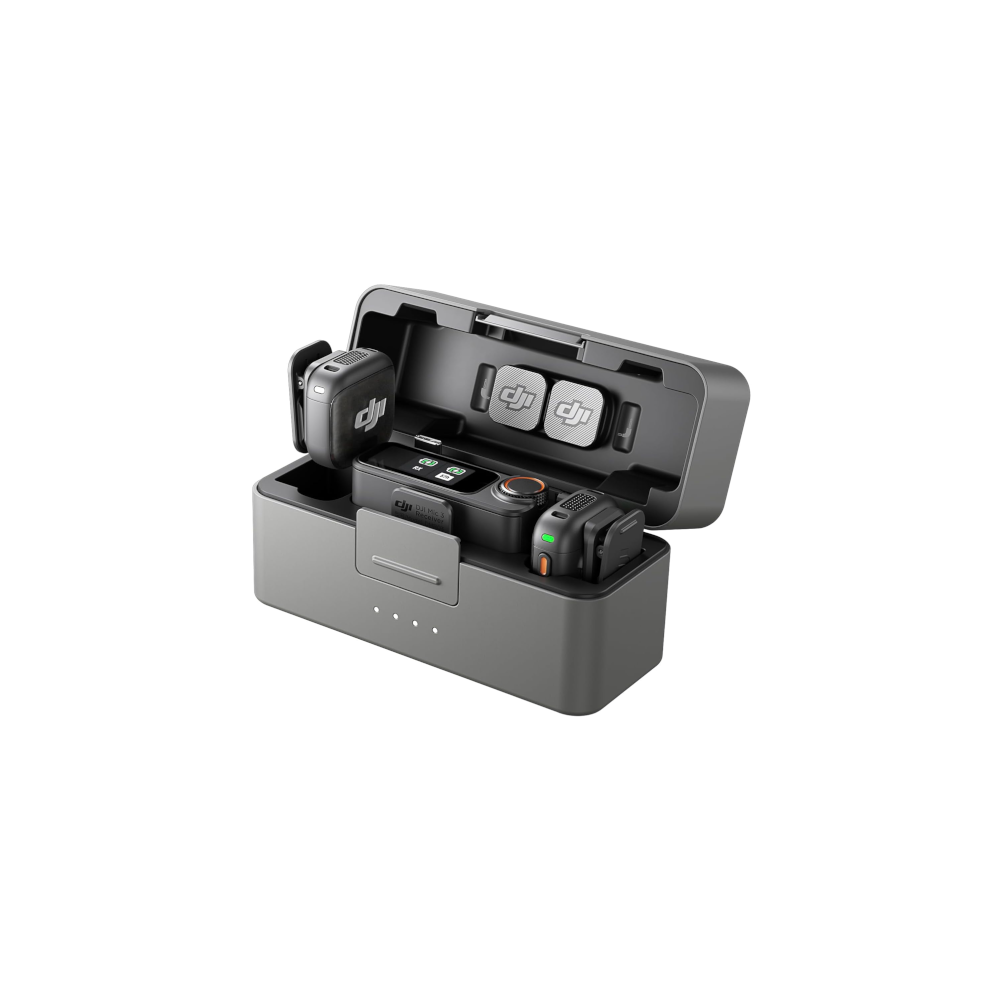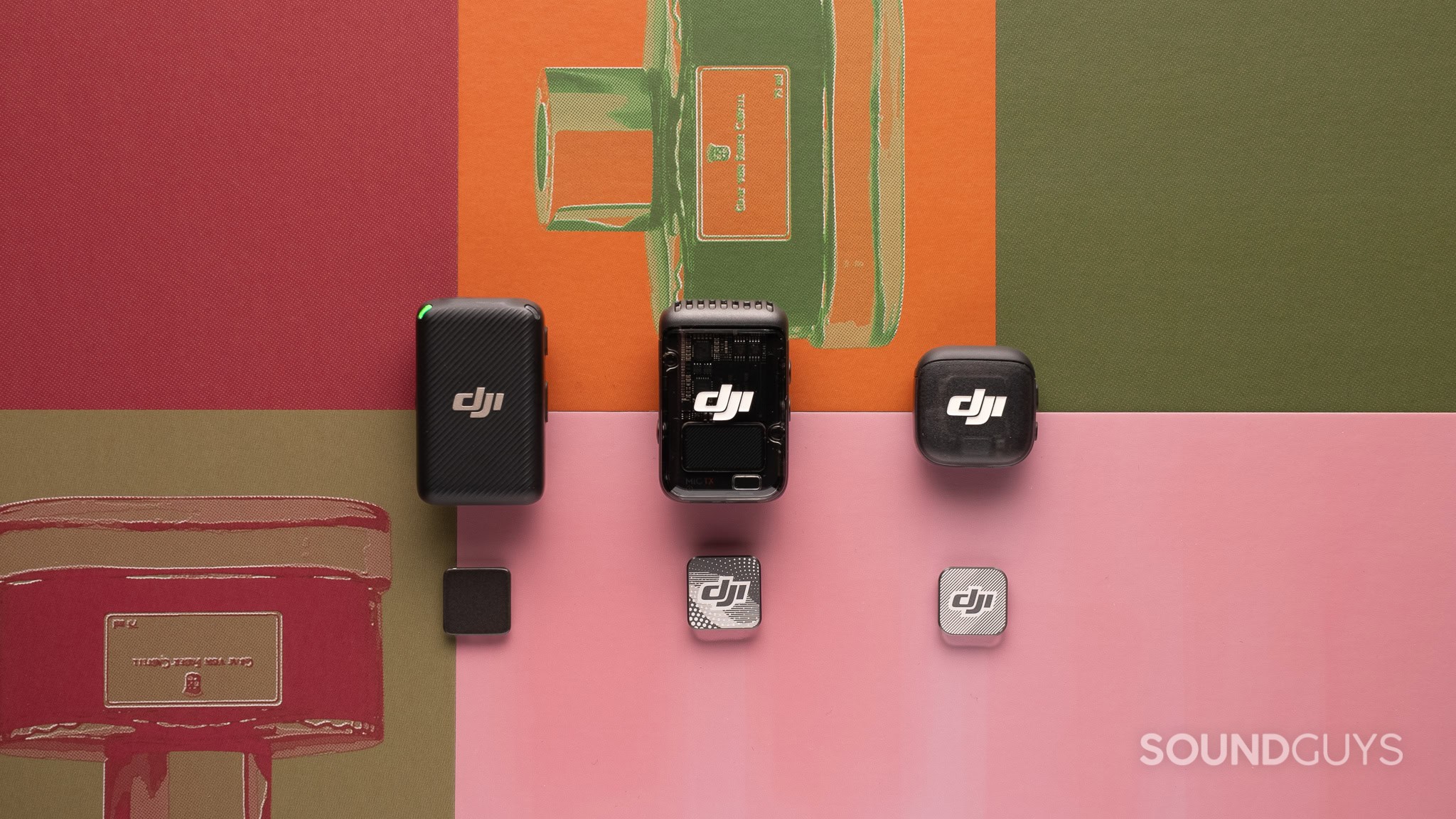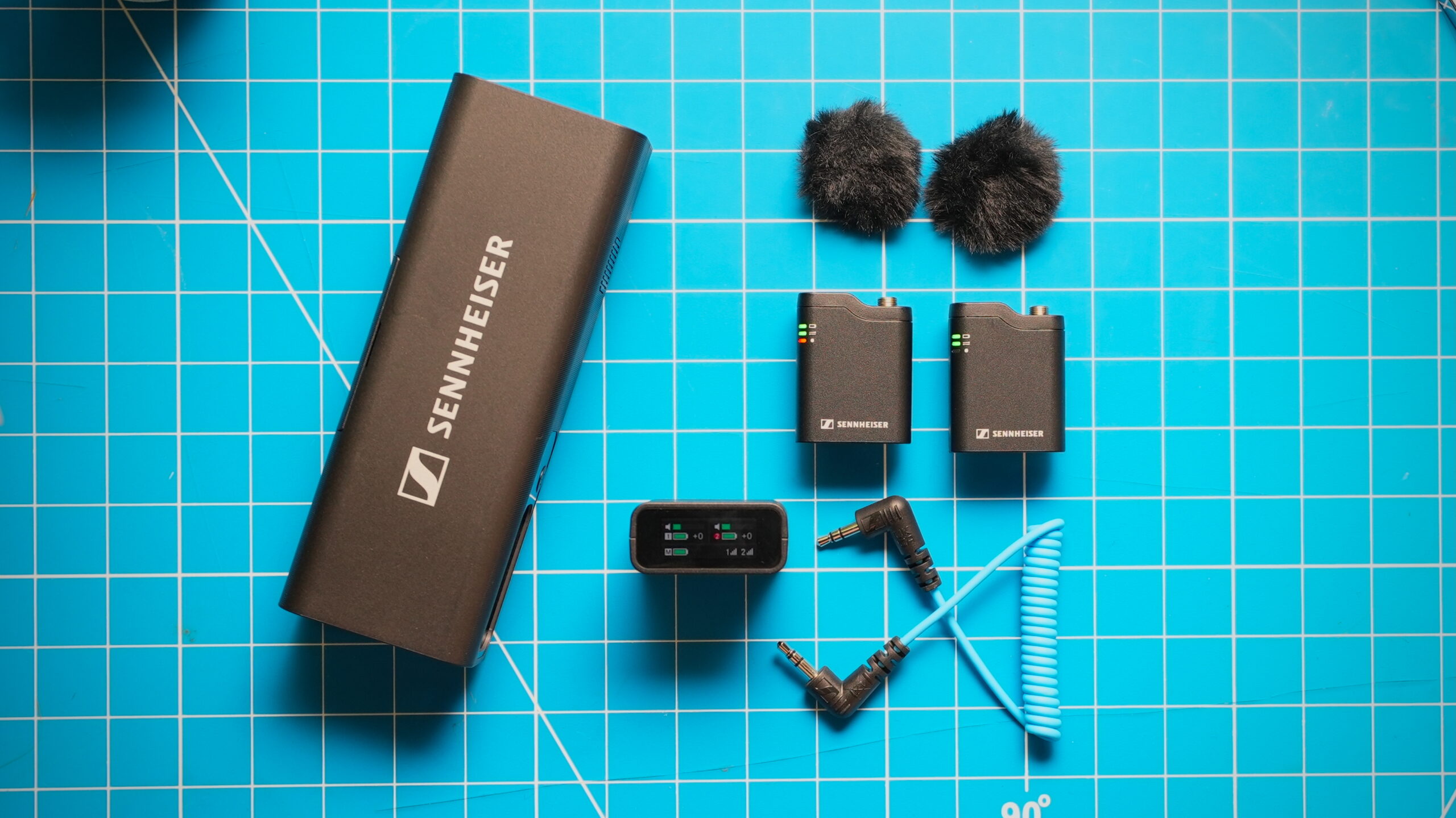All products featured are independently chosen by us. However, SoundGuys may receive a commission on orders placed through its retail links. See our ethics statement.
DJI Mic 3 vs DJI Mic 2: Should you upgrade?
October 20, 2025



DJI has become a major player in wireless microphones for content creators offering compact, feature-rich solutions. The DJI Mic 2 refined the original design with a sturdier case, noise canceling, and useful recording modes. The newer DJI Mic 3, meanwhile, takes things further with smaller transmitters, timecode syncing, and advanced dual-file recording. However, it is not without some frustrating compromises. After testing both, choosing between them depends on how you create content and what features you value most.
Editor’s note: this article was published on October, 20, 2025, and is the first version of the article. Updates will follow as the market changes.
What’s it like to use the DJI Mic 3 compared to the DJI Mic 2?
While the case between the DJI Mic 3 and Mic 2 look identical, there are some differences between the two of them.
The DJI Mic 2 metal charging case keeps the microphones and receiver neatly packaged and easy to manage. The case locks securely, holding both transmitters and the transmitter. Unfortunately, it’s difficult to put the 3.5 mm aux cable and accessories all inside the case. The transmitters clip to clothing with either the built-in clip or strong magnets onto the clip. The OLED touchscreen on the receiver makes it simple to monitor levels, battery, and storage. The record button is isolated from the link button, which makes it less likely to be mispressed. The windscreens also lock in with a dummy 3.5mm jack, a clever fix to a common annoyance. The battery life of the transmitters is rated for up to 6 hours using internal recording. The transmitters themselves can be charged individually through the USB-C connection. You can also access the onboard recordings this way.
The DJI Mic 3 also has a hard case that charges everything, even with the wind muff attached. This time it can house everything you need, including the 3.5mm cable, unlike the DJI mic 2. While more compact transmitters are easier to conceal, as usual, the glaring DJI logo is distracting in professional shoots. The wind muff uses clips to attach to the microphone due to the lack of the 3.5mm jack. Overall, the Mic 3 is much smaller and versatile, but lacks critical features for certain creators, such as the 3.5mm jack. It instead has better battery life despite being half the size, rated at 8 hours using internal recording. With the loss of both the 3.5mm jack and USB port on the transmitters, you can’t plug in a lav mic or offload recordings directly. On the DJI Mic 3, to offload the recordings, you’ll need to insert the microphones into the case and connect the case to your computer.
Do the DJI Mic 2 or DJI Mic 3 have more features?
The DJI Mic 2 packs in plenty of recording modes and refinements. You can record in mono, stereo, or mono-with-safety-track. Internal 32-bit float recording can also give peace of mind when shooting in unpredictable environments. Noise canceling, discreet indicator lights, and accessories added up to a highly capable kit for most creators.
The DJI Mic 3 can do mostly do everything the DJI Mic 2 can and is more advanced. It supports dual-file recording (processed in 32-bit float, unprocessed in 24-bit), timecode syncing for long shoots, and can link up to four transmitters and multiple receivers. Voice tone adjustments let you tweak EQ on the fly. However, I found some of these features buried in menus. Loop recording, while handy for long sessions, could easily overwrite critical files if you’re not careful. The DJI Mic 3 have more software features, while lacking in physical features, such as a mic jack.
How do you control the DJI Mic 3 and DJI Mic 2?
Using both the DJI Mic 3 and Mic 2 is practically the same, both on the receiver and the mobile app side. The only notable difference is that the DJI Mic 3’s specific features won’t be shown when connected to the DJI Mic 2. However, looking at the UI between the DJI Mic 3 receiver and Mic 2 receiver, the user interface on the Mic 3 is clearer to read and understand. This is because the UI is now lighter, and has obvious segments, unlike on the DJI mic 2. Both the DJI Mic 2 and DJI Mic 3 have all their features available through the receiver, without connecting to the app. The app can be used to control the DJI Mic 2 and DJI Mic 3, and works as a much larger control interface.
Is there a difference between the app for the DJI Mic 3 and DJI Mic 2?
The DJI Mic 2 and Mic 3 use the same DJI Mimo app, but if you’re on the DJI Mic 2 you lose access to the DJI Mic 3-specific features. It’s more of a hardware limitation than an app limitation, as the app is effectively a large-screen controller for the transmitter and receiver. Regardless, I would suggest avoiding the app when not required, as it’s just as much an advertising platform for DJI, as it is a larger user interface than the receiver. However, if you’re having trouble controlling the DJI Mics from the menus on the receiver, the DJI Mimo app makes for a better controller. You will have to connect the receiver to a phone with the app installed. When making changes on the app, it will save them directly to the receiver, which means the setting transfer if you connect to another device such as a digital camera.
How does the DJI Mic 3 and DJI Mic 2 connect?
DJI Mic 2 receiver slots directly into a phone with included Lightning or USB-C adapters, also via hot shoe for Sony cameras, 3.5mm jack, and through the native integration with compatible DJI cameras. The built-in hot shoe mount makes it easy to mount onto cameras. A 3.5mm headphone jack provides real-time monitoring, while Bluetooth is limited to linking with DJI apps or gear. You can also connect a 3.5mm audio source to the transmitter instead of the internal mic. This can be used to connect other devices or a microphone for audio input.
The DJI Mic 3 can connect with 3.5mm, USB-C, Lightning, via hot shoe for Sony cameras, Bluetooth, and through native integration with DJI cameras. Unlike the DJI Mic 2, the lightning adapter is no longer included. Using Bluetooth is available, but at the sacrifice of recording quality. Sadly, there is no 3.5mm connection on the transmitter on the DJI Mic 3
Does the DJI Mic 2 sound better than the DJI Mic 3?
the DJI Mic 3 sounds much louder out of the box. Both microphones were in their default state for the recording. Most people would find anything that louder sounds as clearer. To compare the two, it’s best to match the volume with the sliders below. Listening to them at equal volume, the DJI Mic 3 sounds noticeably cleaner than the DJI Mic 2. The DJI Mic 3 seems to pick up a little more of the treble frequencies. This clears up the recording, making it easier to pick out details. However, on the DJI Mic 3, you’re also able to add an EQ on the voice without having to do so on post, unlike with the DJI Mic 2.
The DJI Mic 2 doesn’t sound horrible at all, but comes across a little more muffled.
Check out the samples below and let us know which one you think is better.
DJI Mic 3 microphone demo (Ideal conditions):
DJI Mic 2 microphone demo (Ideal conditions):
DJI Mic 3 microphone demo (Office conditions):
DJI Mic 2 microphone demo (Office conditions):
DJI Mic 3 microphone demo (Street conditions):
DJI Mic 2 microphone demo (Street conditions):
Does the DJI Mic 3 or DJI Mic 2 sound good?
Should you get the DJI Mic 3 or DJI Mic 2?

If you were considering getting the DJI Mic Mini, consider saving up for the DJI Mic 3 instead. You get good audio, with time-saving features for an IRL content creator. If you already have a DJI camera, such as the OSMO Pocket 3, it has a native connection. It can connect directly via Bluetooth for recording with a smartphone, but for better sound quality, the receiver can be used. This makes the DJI Mic 3 a great option for mobile content creators. Despite the size of the DJI Mic 3, the lack of a 3.5mm jack can be an issue, as there is too much branding for certain corporate or documentary work compared to a hidden lav mic.
The DJI Mic 2 is going to be a cheaper wireless mic for smaller studios doing commercial work. Consider a lav mic in combination with the DJI MIC 2 instead. Although the DJI Mic 3 will do if branding and the lack of a lav mic connection are not an issue.

Sounds good
32-bit float recording
Dual recording of processed and unprocessed audio
Timecode

Includes carrying case and deadcat
Great build quality
What should you get instead of the DJI Mic 3 and DJI Mic 2?

The Sennheiser Profile Wireless is an excellent choice for anyone looking for a wireless mic. Similar to the DJI Mic 3 works with pretty much anything, whether it’s your phone, laptop, or camera. It has a small compact charging bar case, making it highly portable, and doubles as a handheld mic. It also has features like onboard recording and a safety track mode. It has everything you need to capture a quality voice recording without unnecessary extras. While it does sound good, it doesn’t have features such as on-board noise canceling.

Thank you for being part of our community. Read our Comment Policy before posting.